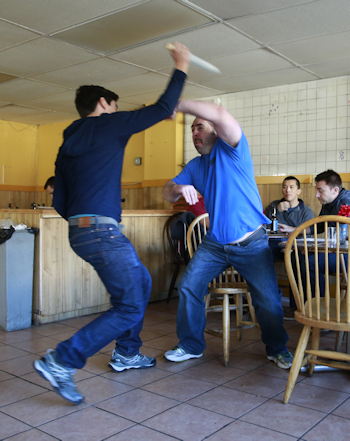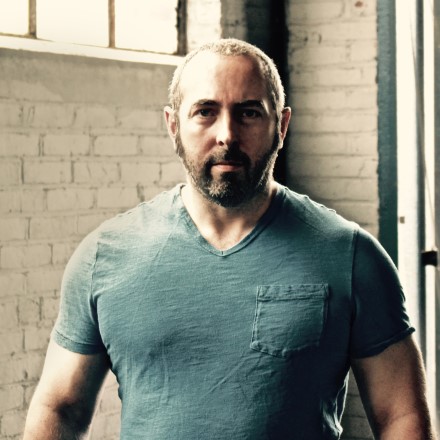About Active Shooter Hate Crimes
 It can sometimes be difficult to differentiate between a hate crime and a terrorist act – especially when the aggressor sends out mixed messages about their
motives, and is not a member of a recognized group or organization (something that is becoming more common with “lone wolf” terrorism). At first glance, the
shooting at the Pulse Nightclub in Orlando (June 12th, 2016), was an act of terrorism. The perpetrator, who killed 49 people, was a Muslim, who in a 911 call,
claimed ISIS affiliation, and said that the motivation behind his killing spree was triggered by the US Killing of Abu Waheeb (an ISIS executioner) in Iraq,
the previous month. There was no evidence that the shooter, 29-year old Omar Mateen, had any official ties with ISIS (a CIA report found no links between
Mateen and ISIS), and there were also rumors that Mateen had attended the Nightclub previously trying to pick up men (it was a gay nightclub), and had been
active on gay dating websites (the FBI found no evidence of this). Such incidents, those which target specific groups - in this case the LGBTQ community -
yet may use a terrorist organization’s goals to justify or legitimize an attack, can be difficult to categorize; the attack may have been a mix of several
emotive motivations as well as political/religious ones, etc.
It can sometimes be difficult to differentiate between a hate crime and a terrorist act – especially when the aggressor sends out mixed messages about their
motives, and is not a member of a recognized group or organization (something that is becoming more common with “lone wolf” terrorism). At first glance, the
shooting at the Pulse Nightclub in Orlando (June 12th, 2016), was an act of terrorism. The perpetrator, who killed 49 people, was a Muslim, who in a 911 call,
claimed ISIS affiliation, and said that the motivation behind his killing spree was triggered by the US Killing of Abu Waheeb (an ISIS executioner) in Iraq,
the previous month. There was no evidence that the shooter, 29-year old Omar Mateen, had any official ties with ISIS (a CIA report found no links between
Mateen and ISIS), and there were also rumors that Mateen had attended the Nightclub previously trying to pick up men (it was a gay nightclub), and had been
active on gay dating websites (the FBI found no evidence of this). Such incidents, those which target specific groups - in this case the LGBTQ community -
yet may use a terrorist organization’s goals to justify or legitimize an attack, can be difficult to categorize; the attack may have been a mix of several
emotive motivations as well as political/religious ones, etc.
Some active shooter incidents are much more easily identified as “Hate Crimes” – ones where members of a group are targeted based on their race, religion, race or sexual orientation, etc. In 2015 (June 17th), Dylaan Roof, walked into a prayer meeting at the Emanuel African Methodist Episcopal Church. As the prayer meeting wrapped up, Roof opened fire on those assembled, killing 9 Black Americans. His goal: to ignite a race war within the US. His views concerning the need for White Americans to take back control of their country were no secret to anyone who had visited his website. Roof didn’t belong to any organization or group, and had acted alone, with no grooming or prompting. Per FBI data, Black Americans have been the most frequent victims of hate crimes based on race, followed by Jews (sometimes based on religion, but more often attacks are racially motivated), however the rate of increase of hate crimes is greater against Muslims (there was a 67% increase in 2015) and LGBTQ communities and groups. If you belong to any minority group in the US, there are individuals and organizations which mean you harm.
In 2009 (June 10th), 88-year old James Von Brunn, a white supremacist and Holocaust denier, entered the United States Holocaust Memorial Museum, and immediately shot a security guard with his .22 caliber rifle, killing him. Two other security guards returned fire, wounding Vonn Brunn. An Octogenarian with a rifle killed one, and would have killed many more were it not for the decisive action of the other security guards present. Von Brunn was not a particularly athletic man, but when armed with a rifle, he didn’t have to be, to engage in an active shooter killing spree. We may automatically disqualify certain demographics from engaging in hate crimes and killing sprees, however if an individual with a grudge can gain access to firearms, they can act on their hate. At his trial, Von Brunn stated that he’d sworn to defend his country, and for him this involved actively dealing with the Jewish conspiracy that had taken hold of, and was running, his country. It only takes one deranged individual with a gun to cause a massacre, regardless of their age and athleticism.
There is no minority community/group that is exempt from being targeted for a hate crime. There are many US citizens who are concerned that the biggest threat to their safety comes from the US Muslim population, however this is a group/community that has seen a rapid rise in the number of hate crimes it has experienced in the past couple of years, and has been actively targeted by many white militias and extremist groups. In October 2016, a terror campaign, led by a group who referred to themselves as “the Crusaders”, was uncovered. A trio of white supremacists had targeted Muslim immigrants who were living in an apartment block in Garden City, Kansas. They planned to park four vehicles packed with explosives at each corner of the apartment block, and then simultaneously detonate them. This was planned to occur on November the 9th, one day after the Presidential Election, with the aim of “waking up” White Americans, in the same way that Dylaan Roof had hoped his massacre of 9 Black Church goers would have done. The group were also armed with a variety of firearms, that they intended to use against any survivors of the blast, including children (hate crimes don’t respect any members of a group; all are guilty and deserving of death, in the eyes of the perpetrators) – one of the group, Patrick Stein, boasted to FBI officials, ““When we go on operations, there’s no leaving anyone behind, even if it’s a one-year-old, I’m serious. I guarantee, if I go on a mission, those little fuckers are going bye-bye,”. When a group is targeted as part of a hate crime, the only goal is the complete annihilation of the group.
By 2014, the LGBTQ community was experiencing more hate crimes than the Jewish community (according to FBI statistics). A more confident and open community was being met with greater persecution and violent crime. In fact, LGBTQ people are twice as likely to be targeted as African Americans, making them one of the most at-risk groups for hate crimes. As the US has become more accepting of people with various sexual orientations, etc., so radical groups and individuals have become more extreme in their treatment of the LGBTQ community; an increase in general tolerance has led to more radical responses by those on the fringe – when individuals with extreme views see more moderate individuals accept things such as marriage equality, etc., they feel that their own opinions and outlook are under threat, and become more likely to respond with aggression and violence; which may include deadly force. The Pulse Nightclub attack may well have been in support of a terrorist group, however its target was the Florida LGBTQ community, and the target selection was far from random.
Our training programs aren’t capable of reducing hate and anger, however they can teach groups, institutions and organizations how to make themselves harder targets, and what to do when they are subjected to violent incidents. If you are a community leader or the representative of a group or organization that you feel may have the potential to be the target of a hate crime, such as an active shooter incident, and want to understand the types of training and services that can help you reduce and mitigate the risks that you and your group/community face, please contact us by clicking here.
Location
Krav Maga Yashir
165 New Boston St (Unit E)
Woburn, MA 01801
Active Shooter Boston Instructor
Gershon Ben Keren

Subscribe
Sign up with your email address to receive news and updates.